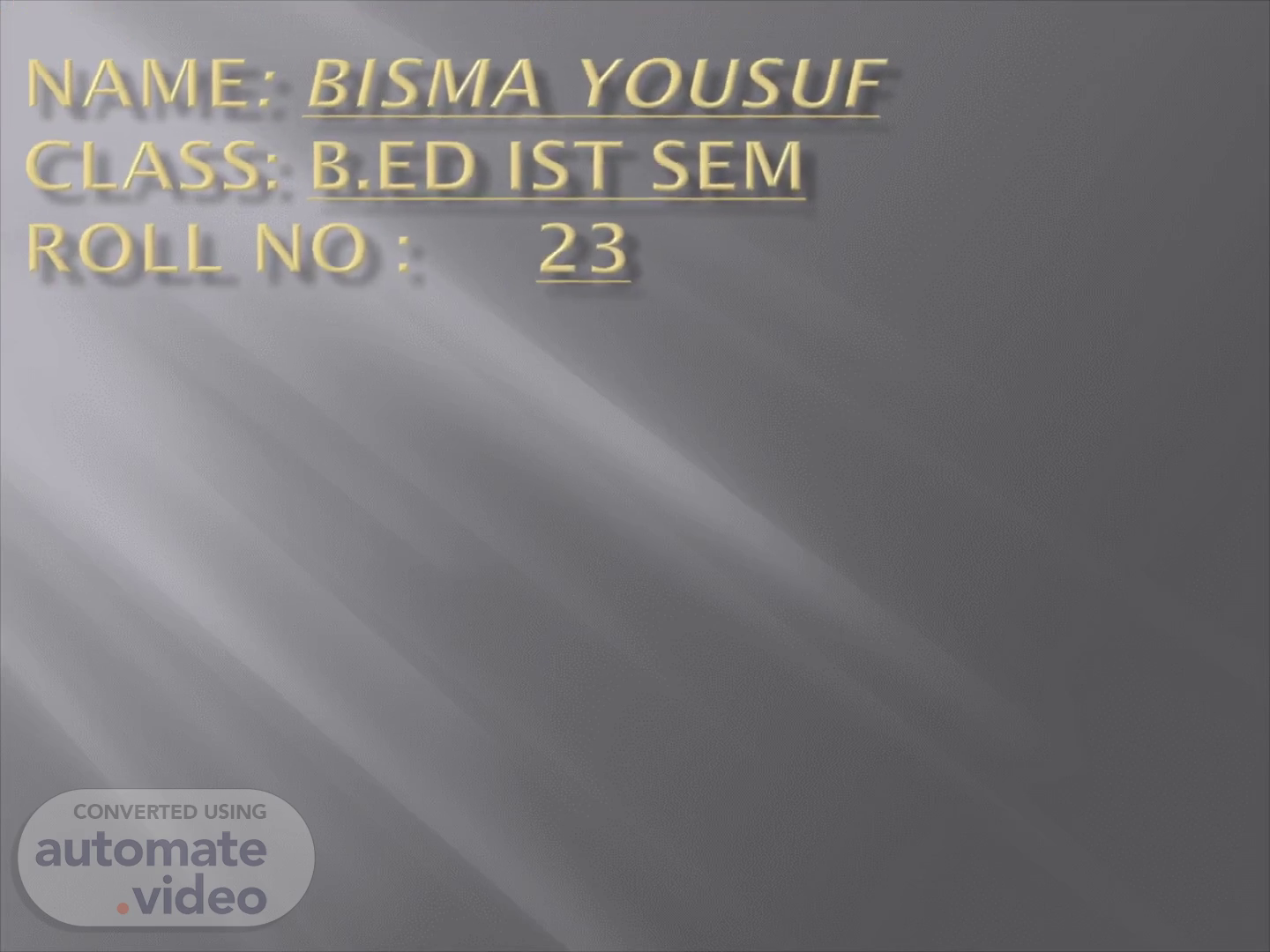
Name: Bisma Yousuf Class: B.ed Ist Sem Roll no : 23
Scene 1 (0s)
Name : B isma Y ousuf Class: B .ed I st S em Roll no : 23.
Scene 2 (24s)
O rientation. Orientation is the ability to recognize one’s position in relation to the environment. It is a ability to the known where you are and where you want to go, whether you are moving from one room to another or waking downtown for a shopping trip. Mobility Mobility is defined as ‘physical movement’ and the negotiation of any obstacles and hazards . it is the aim of obtaining freedom of moment without coming to any harm, safety in travelling as well as minimizing the level of stress placed upon a visually impaired person..
Scene 3 (49s)
1. Orientation and mobility (o & m), is a profession which focuses on instructing individuals who are blind or visually impaired with safe and effective travel through their environment. 2. Individuals o & m specialists can work for school, government agencies or work as private contractor. 3. The academy for certification of vision rehabilitation and education professionals (ACVREP) offers certification for vision rehabilitation profession in the united states..
Scene 4 (1m 15s)
Needs and importance of orientation. Understand where an object is located and where the object is in relation to their own. It sharpens remaining senses through sensory, develops coordination of movement and improves posture. Needs and importance of mobility Mobility enables an individual to perform daily activities life going to a common place so that they are able to interact with others and to develop interpersonal relations. Desirable to expect that they will move independently in both indoor and out door environments ..
Scene 5 (1m 38s)
Skills that are taught through O & M OR educational needs of deaf-blind.
Scene 6 (2m 10s)
Children who are deaf blind also need orientation and mobility training because their other distance sense (hearing) is affected, orienting to their environment and travelling safely becomes even more important orientation and mobility specialists have specific knowledge which is critical to child with deaf blindness.
Scene 7 (2m 25s)
1. It is important to keep the person informed while guiding communication methods for people who are deaf or have hearing loss will vary significantly some being verbal, visual, tactile or a combination. 2. in these situations it is important to place that is safe . 3. communicate what is happening (change in direction, traffic, hazard etc. ) 4. allow time for person to process information and decide what they want to do. 5. proceed if safe. 6. for people who are hard of hearing it may be necessary to move to an area where it is quieter (where possible) to enable them to hear information being communicated..
Scene 8 (2m 57s)
Although orientation and mobility specialist are primarily responsible for o & m training, their work may not always be done directly with the child. When the child is very young e.g. ; The o & m may provide construction to the vision teacher, occupational the rapist, physical therapist, early intervention specialist and the family ..
Scene 9 (3m 25s)
Thank you.